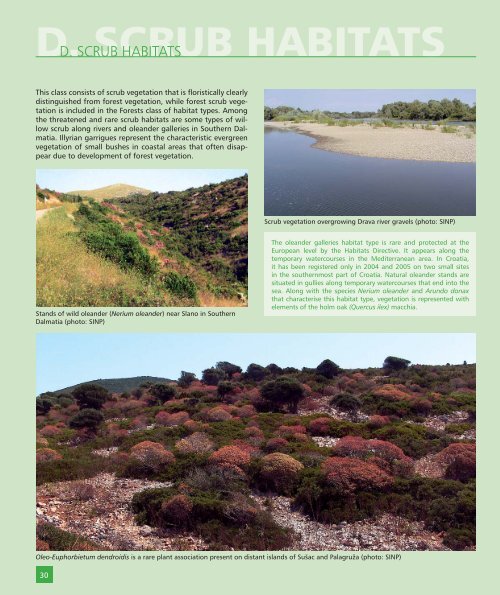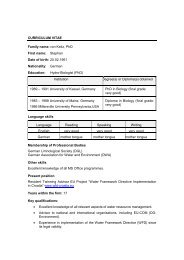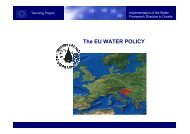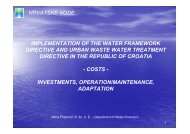BIODIVERSITY OF CROATIA
BIODIVERSITY OF CROATIA
BIODIVERSITY OF CROATIA
Create successful ePaper yourself
Turn your PDF publications into a flip-book with our unique Google optimized e-Paper software.
SCRUB HABITATS<br />
D. SCRUB HABITATS<br />
This class consists of scrub vegetation that is floristically clearly<br />
distinguished from forest vegetation, while forest scrub vegetation<br />
is included in the Forests class of habitat types. Among<br />
the threatened and rare scrub habitats are some types of willow<br />
scrub along rivers and oleander galleries in Southern Dalmatia.<br />
Illyrian garrigues represent the characteristic evergreen<br />
vegetation of small bushes in coastal areas that often disappear<br />
due to development of forest vegetation.<br />
Scrub vegetation overgrowing Drava river gravels (photo: SINP)<br />
Stands of wild oleander (Nerium oleander) near Slano in Southern<br />
Dalmatia (photo: SINP)<br />
The oleander galleries habitat type is rare and protected at the<br />
European level by the Habitats Directive. It appears along the<br />
temporary watercourses in the Mediterranean area. In Croatia,<br />
it has been registered only in 2004 and 2005 on two small sites<br />
in the southernmost part of Croatia. Natural oleander stands are<br />
situated in gullies along temporary watercourses that end into the<br />
sea. Along with the species Nerium oleander and Arundo donax<br />
that characterise this habitat type, vegetation is represented with<br />
elements of the holm oak (Quercus ilex) macchia.<br />
Oleo-Euphorbietum dendroidis is a rare plant association present on distant islands of Su{ac and Palagru`a (photo: SINP)<br />
30









